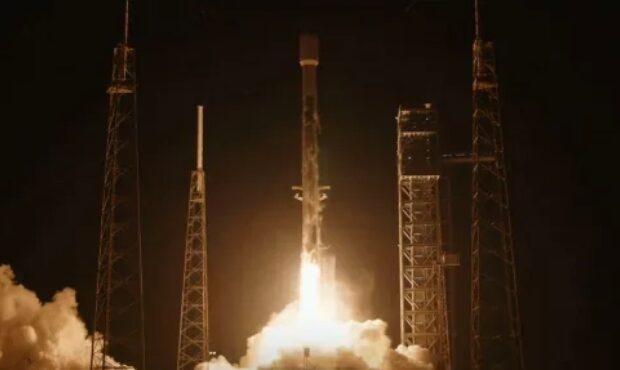SpaceX is not slowing down its launch plans for 2024 after a record-breaking 2023. The first launch of the year is scheduled for Wednesday evening from Florida.
Launch Complex 40 at Cape Canaveral Space Force Station is scheduled to host a Falcon 9 rocket carrying a telecom satellite for the private Swedish company Ovzon on Thursday during an 87-minute window that opens at 4:47 p.m. The launch window is scheduled to open at 6:04 p.m.
The weather squadron for Space Launch Delta 45 predicts a 90% chance of favorable conditions, rising to 95% in the case of a 24-hour delay.
Expect a double sonic boom for the Space Coast as the first-stage booster, which is flying for the tenth time, attempts a recovery landing at Canaveral’s Landing Zone 1.
Launched into a geostationary transfer orbit, the 3,968-pound Ovzon 3 satellite is the first privately-funded and developed Swedish geostationary satellite ever. It will take three to four months to reach its geostationary orbit, which will be at 22,236 miles in altitude and 59.7 degrees east.
Among its two Florida pads, SpaceX had an incredible year, launching 68 of the 72 orbital missions that the Space Coast saw, including three crewed flights to the International Space Station and five flights of its formidable Falcon Heavy. From the Californian Vandenberg Space Force Base, it added 28 more flights.
Although this is SpaceX’s first launch of the year, it has already launched 21 Starlink satellites from Vandenberg late on Tuesday.
The founder of the company, Elon Musk, wrote on X, “Congrats to the SpaceX team on achieving 96 launches in 2023,” following the company’s final two flights of the year on December 28: a Falcon Heavy flight for the Space Force from Kennedy Space Center, and a Falcon 9 Starlink mission from Cape Canaveral, which took place less than three hours apart.
SpaceX has now launched two rockets on the same calendar day from its two Space Coast pads four times in 2023. Musk stated in 2023 that the company planned to speed up the turnaround time at its main Cape Canaveral pad in order to launch at least two rockets a week from SLC 40. It accomplished a record turnaround on that pad back from August 3–6 by launching two Falcon 9s in a span of three days, twenty-one hours, and forty-one minutes.
In October, Bill Gerstenmaier, the vice president of build and reliability at SpaceX, informed a Senate subcommittee that the company planned to launch 12 times a month in 2024, or 144 times in total.
“[If] all goes well, SpaceX’s total launch mass to orbit will increase ~50% next year, not including Starship,” Musk wrote on Twitter.
Arriving at the Space Coast launch pad in 2024
In the meantime, United Launch Alliance is working to complete the remaining 17 Atlas V lone Delta IV Heavy rocket launches while accelerating the development of its new Vulcan Heavy rocket.
Additionally, SpaceX is finishing up construction at SLC 40 on a new crew access arm that will enable human spaceflight from Cape Canaveral and KSC.
The private Axiom Space mission Axiom 3, which is scheduled to launch to the International Space Station (ISS) later this month, will be the vehicle’s first intended human spaceflight of the year. The flight will continue to target the launch pad at KSC no earlier than January 17.
The company’s ability to eventually bring its Starship and Super Heavy rocket to the Space Coast is facilitated by having two launch pads in Florida that are ready for crews to use. At KSC, SpaceX is still constructing the Starship launch tower.
For the time being, Starship is preparing for its third orbital test flight from Starbase, the company’s launch facility in Boca Chica, Texas. The company conducted static fire engine tests prior to the new year, so the hardware for flight No. 3 is already in place. However, the results of the first two attempts in 2023 were explosive.
The objective is for it to become the first fully reusable rocket with the Super Heavy booster and Starship first-stage both able to make successful recovery landings when it does eventually launch.








